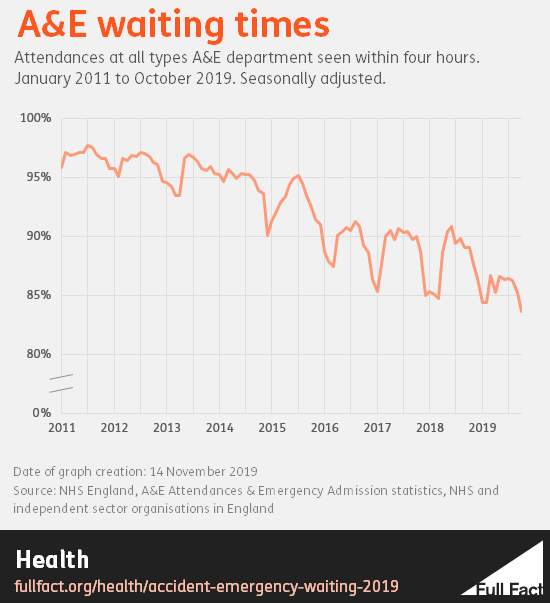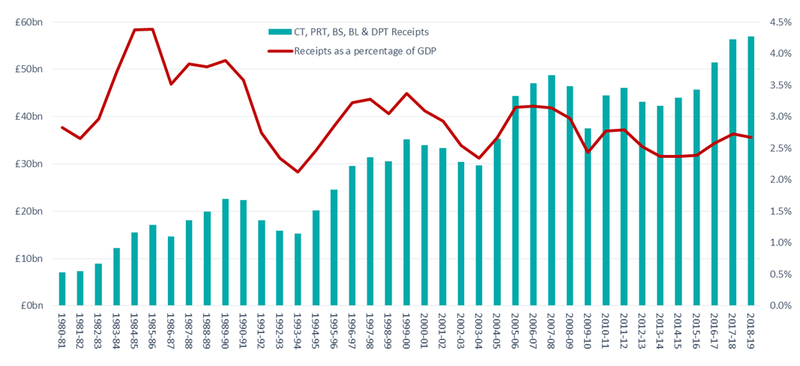How many horses in Kensington?
Right at the beginning of the election we criticised the Liberal Democrats for putting out information overstating their chances in parliamentary seats by using polling questions that ask about specific scenarios, rather than general voting intention.
We've recently seen an interesting new example of this approach.
On Sunday the Liberal Democrat candidate for Kensington Sam Gyimah (formerly of the Conservative party) tweeted out polling which asked voters in three London constituencies (including Kensington) who they would vote for if the only two parties with a realistic chance of winning were:
- Labour and the Conservatives, or
- the Liberal Democrats and the Conservatives.
In the Conservative/Labour head-to-head, the Conservatives “won” all three seats. But with a Conservative/Lib Dem head-to-head, the Lib Dems took all three.
Now this is all very interesting, but it’s not how elections actually work. Voters are not told which parties have a “realistic chance” when they’re in the polling booth. (The point of this kind of campaign technique, of course, is to try and convince voters of your favoured interpretation of the parties’ relative chances.)
So using that data, as, as Mr Gyimah did, to say that “Only the @LibDems can stop the Tories in Kensington” is pushing things a bit far—especially as Kensington is currently held by Emma Dent Coad, a Labour MP.
The poll to which Mr Gyimah refers also looked at the actual voting intention in Kensington, when respondents are not told that only two parties have a realistic chance.
It shows the Conservatives on 36%, the Lib Dems on 33%, and Labour on 27%. So the Lib Dems are polling ahead of Labour, but the data suggests all three parties have a competitive chance of taking the seat.
Honesty in public debate matters
You can help us take action – and get our regular free email
Good morning!
We're preparing for tonight's TV debate between Boris Johnson and Jeremy Corbyn, which we'll be live fact checking. We'll also be doing a roundup of the biggest claims from the show.
Elsewhere this morning, we've watched the Green party election 2019 manifesto launch - there wasn't much to fact check in the speeches, but we'll look through the manifesto document and have updates later today
We’re off to talkRADIO.
Tune into Eamonn Holmes’ show at 5.30pm to hear our editor, Tom Phillips, run through some of the biggest claims of the last week.
We’ll be covering maggots in orange juice, immigration numbers, misleading leaflets and Scottish GDP.
Digitally altered Diane Abbott video
Before this election started, concerns were raised about the possibility of “deepfake” videos being deployed during the campaign.
To date, we haven’t seen any deepfakes, other than deepfakes intended to warn people about the existence of deepfakes.
However, we have seen videos that use much cruder techniques.
Today we’ve seen a video spreading online of Diane Abbott, digitally altered to show her in clown makeup, and talking about why you should vote Labour.
It’s not difficult to see that the makeup has been digitally added to the video (you can see the original unedited video here.)
It’s notable because spoof subtitles have been added to the video, which becomes interesting when you take into account that many people watch videos on social media without sound. While this obviously isn’t intended to fool anyone, it might be worth bearing in mind that subtitles don’t necessarily reflect what’s actually being said in the video.
A&E waits: record levels—but data only goes back to 2010
Last week many media outlets reported that A&E waiting times had hit their “worst ever level”. This is technically correct, but it’s worth noting that comparable data only goes back to 2010.
In October 2019, 83.6% of patients attending all types of A&E departments (including things like dental A&E and urgent care centres) in England were admitted, transferred or discharged within four hours.

You can read our full fact check here.
Changing tax
This morning Conservative MP Andrea Leadsom appeared on BBC Radio 4’s Today programme, and among other things discussed her party’s plans for “a proper reform of business rates”. She didn’t specify exactly what this entails, but did say “business rates is the one tax that business organisations tell us isn’t working for them”.
Presenter Nick Robinson asked her several times how the Conservatives were going to fund a reduction in business rates.
After asking for the third time “where does the money come from?”, Ms Leadsom responded:
“You’re assuming money comes from somewhere. What I’m trying to explain to you is since our reduction in the headline rate of corporation tax, the HMRC’s tax take has actually increased by something like 45% because more businesses comply”.
Ms Leadsom did not go as far as to say a reform of business rates would be funded through a reduction in corporation tax, but she did suggest that lowering corporation tax was a way of potentially generating more revenue for the government.
A couple of hours later, Boris Johnson announced that the Conservatives would postpone their proposed further cuts in corporation tax, saying that this would free up £6 billion for the NHS.
Those slightly contradictory messages aside, it’s far from clear how far corporation tax reductions have increased tax revenue overall.
The government began reducing corporation tax at the start of 2011/12. Corporation tax revenues fell over the next couple of years, but then have increased in every year since 2014/15. They haven’t gone up by 45% in that period, though. They have increased by around 45% since 2009/10, but that was two years before the Conservatives started to reduce corporation tax, when tax revenues were at a low in the immediate aftermath of the financial crisis.
And revenues as a percentage of GDP have remained fairly flat over the past decade (and are relatively low by historic standards), as you can see on this helpful chart from HMRC’s tax receipts document.

There’s no way to definitively know how corporation tax reductions might have impacted other tax revenues (such as income tax), or to what extent they may have contributed more broadly to economic growth.
As we said last time we wrote about this, "the exact impacts on economic growth are hard to predict", although HMRC's estimates suggested that the previous corporation tax cuts could result in between 0.6% and 0.8% growth in GDP over 20 years.
A routine check-up of Labour’s dental claims
Labour has announced it wants to scrap certain dentistry charges if it wins the election, which would make it free to get a check-up and get other basic services. These “band one” charges currently cost £22.70.
Jeremy Corbyn trailed the policy yesterday saying one in five patients delay going to the dentist because of cost, leaving 100,000 people in hospital with preventable problems with their teeth.
The one in five figure is significantly out of date, and it’s misleading to directly link dental costs to 100,000 hospital admissions, as he does.
The one in five claim is what the Adult Dental Health Survey found in late 2009/10. 19% of respondents in England, Wales and Northern Ireland said they had delayed dental treatment at some point in the past because of the cost.
Why such out of date figures? That survey only happens every 10 years, so it means we can’t be certain Labour’s “one in five” figure is still accurate in 2019.
Just over 100,000 hospital admissions in England in 2018/19 were related to tooth decay, and another 17,000 to gum disease. These aren’t necessarily all different people, as one person can have multiple admissions for similar ailments.
It’s misleading for Jeremy Corbyn to connect all these cases directly to people not being able to afford dental care, as he does in his tweet. This isn’t substantiated by the data, which can’t tell us the circumstances behind those admissions to hospital.
Honesty in public debate matters
You can help us take action – and get our regular free email
Labour's claim on NHS overtime: a plausible estimate
On Friday, the Guardian reported Labour Party research which found that “NHS staff are working over a million hours a week of unpaid overtime”.
The findings are based on data from the NHS staff survey, the most recent edition of which was published in February 2019, and Labour shared their calculations with us.
Based on what we’ve seen, it’s very much plausible that staff typically work a million hours of unpaid overtime a week collectively, but the data doesn’t show it definitively. These million hours would be spread between hundreds of thousands of NHS staff working a number of hours overtime per week.
The most recent NHS staff survey went out to over 1.1 million staff across 300 NHS organisations in England. Nearly 500,000 staff took part between October and December 2018.
Almost 463,000 staff responded to the question “On average, how many additional UNPAID hours do you work per week for this organisation, over and above your contracted hours?”
42% said 0 hours, 44% said up to 5 hours, 10% said 6-10 hours, and 4% said 11 or more hours.
If you assume that staff typically worked the average amount of overtime within the range they selected (so 8 hours for those who answered 6-10 hours, for example), this comes to roughly 1.1 million hours of unpaid overtime a week.
But that’s a broad-brush assumption and we can’t be certain that’s the case. If you were more cautious and assumed staff worked at the lower end of those ranges, it would show staff working about 670,000 hours unpaid a week
Nevertheless, the data certainly suggests it’s plausible that over one million hours of unpaid overtime are worked a week.
It’s also important to remember that this survey was answered by 46% of the 1.1 million staff to whom it was sent out (and of those who answered, 93% answered the unpaid overtime question). So it won’t reveal the full extent of unpaid overtime within the NHS in England.
We also don’t know whether those who answered the survey are representative of the rest of the wider NHS, or whether they did significantly more, or less, unpaid overtime than others.
Conservatives repeat inaccurate claim on Labour’s immigration policy
Speaking on the BBC’s Andrew Marr show this morning, Foreign Secretary Dominic Raab twice repeated the claim that Labour wants “open door immigration not just from Europe but from the rest of the world” and that it “would double the overall level of immigration”.
As we fact checked this week, this claim is not credible. Labour hasn’t published its manifesto yet and details are currently expected to be released in a few days. Jeremy Corbyn has signalled in recent interviews with the BBC, including later on in today’s Andrew Marr show, that the party’s priority is to secure free movement for people who have family with settled status in the UK.
In addition, there’s no evidence that the figures the Conservatives have put on Labour’s hypothetical policy are realistic.
Who's Scot a job?
On Tuesday a Scottish government account tweeted that Scotland’s youth unemployment rate “fell by 0.3 percentage points over the year”.
This is looking at a dataset which is less reliable than the usual statistics on youth unemployment—which actually show that youth unemployment has risen in the last year.
The UK Statistics Authority has today asked the Scottish government to make it clear that the data it used is not considered reliable.
You can read our full fact check here.